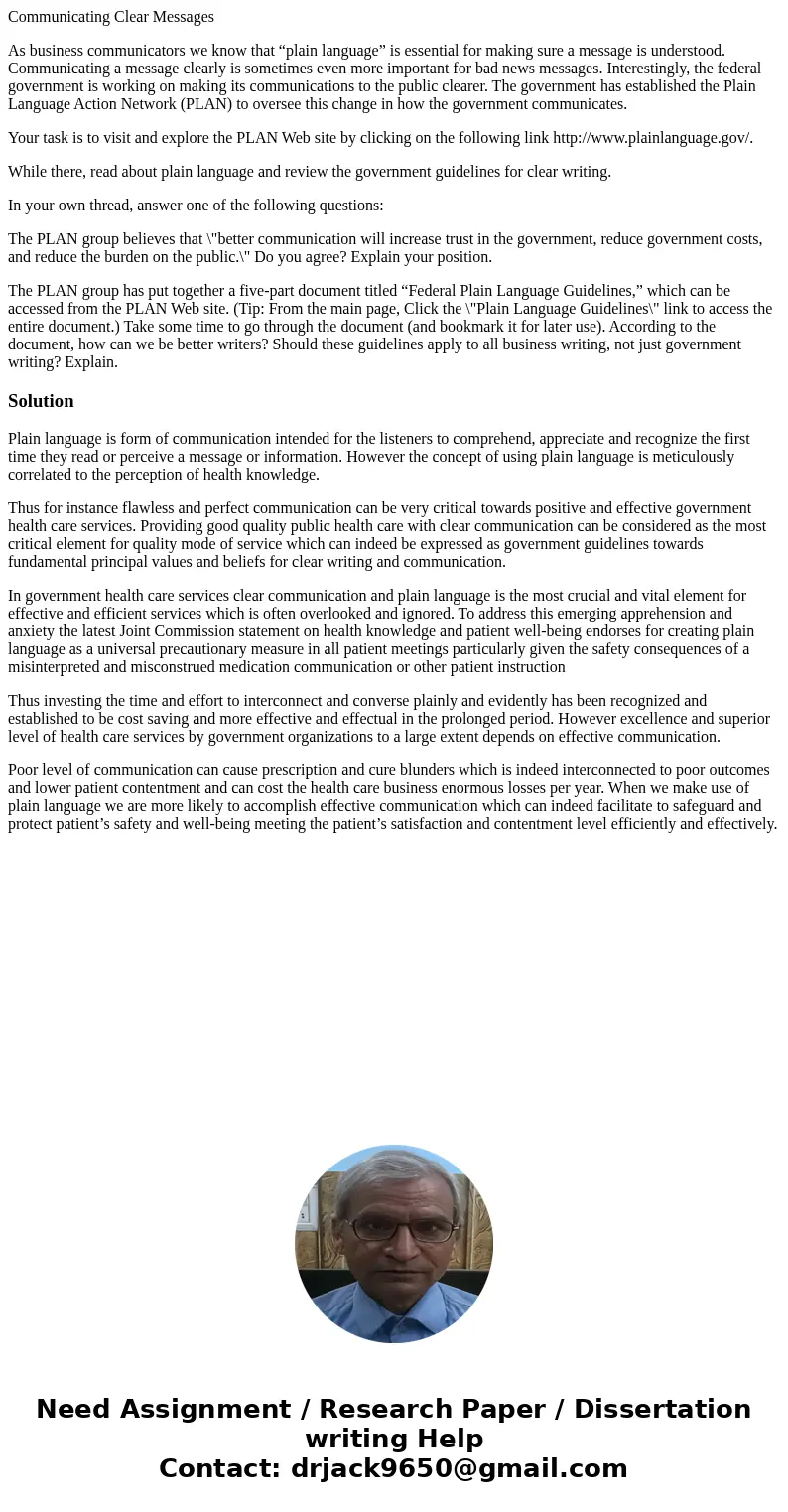Communicating Clear Messages As business communicators we kn
Communicating Clear Messages
As business communicators we know that “plain language” is essential for making sure a message is understood. Communicating a message clearly is sometimes even more important for bad news messages. Interestingly, the federal government is working on making its communications to the public clearer. The government has established the Plain Language Action Network (PLAN) to oversee this change in how the government communicates.
Your task is to visit and explore the PLAN Web site by clicking on the following link http://www.plainlanguage.gov/.
While there, read about plain language and review the government guidelines for clear writing.
In your own thread, answer one of the following questions:
The PLAN group believes that \"better communication will increase trust in the government, reduce government costs, and reduce the burden on the public.\" Do you agree? Explain your position.
The PLAN group has put together a five-part document titled “Federal Plain Language Guidelines,” which can be accessed from the PLAN Web site. (Tip: From the main page, Click the \"Plain Language Guidelines\" link to access the entire document.) Take some time to go through the document (and bookmark it for later use). According to the document, how can we be better writers? Should these guidelines apply to all business writing, not just government writing? Explain.
Solution
Plain language is form of communication intended for the listeners to comprehend, appreciate and recognize the first time they read or perceive a message or information. However the concept of using plain language is meticulously correlated to the perception of health knowledge.
Thus for instance flawless and perfect communication can be very critical towards positive and effective government health care services. Providing good quality public health care with clear communication can be considered as the most critical element for quality mode of service which can indeed be expressed as government guidelines towards fundamental principal values and beliefs for clear writing and communication.
In government health care services clear communication and plain language is the most crucial and vital element for effective and efficient services which is often overlooked and ignored. To address this emerging apprehension and anxiety the latest Joint Commission statement on health knowledge and patient well-being endorses for creating plain language as a universal precautionary measure in all patient meetings particularly given the safety consequences of a misinterpreted and misconstrued medication communication or other patient instruction
Thus investing the time and effort to interconnect and converse plainly and evidently has been recognized and established to be cost saving and more effective and effectual in the prolonged period. However excellence and superior level of health care services by government organizations to a large extent depends on effective communication.
Poor level of communication can cause prescription and cure blunders which is indeed interconnected to poor outcomes and lower patient contentment and can cost the health care business enormous losses per year. When we make use of plain language we are more likely to accomplish effective communication which can indeed facilitate to safeguard and protect patient’s safety and well-being meeting the patient’s satisfaction and contentment level efficiently and effectively.

 Homework Sourse
Homework Sourse